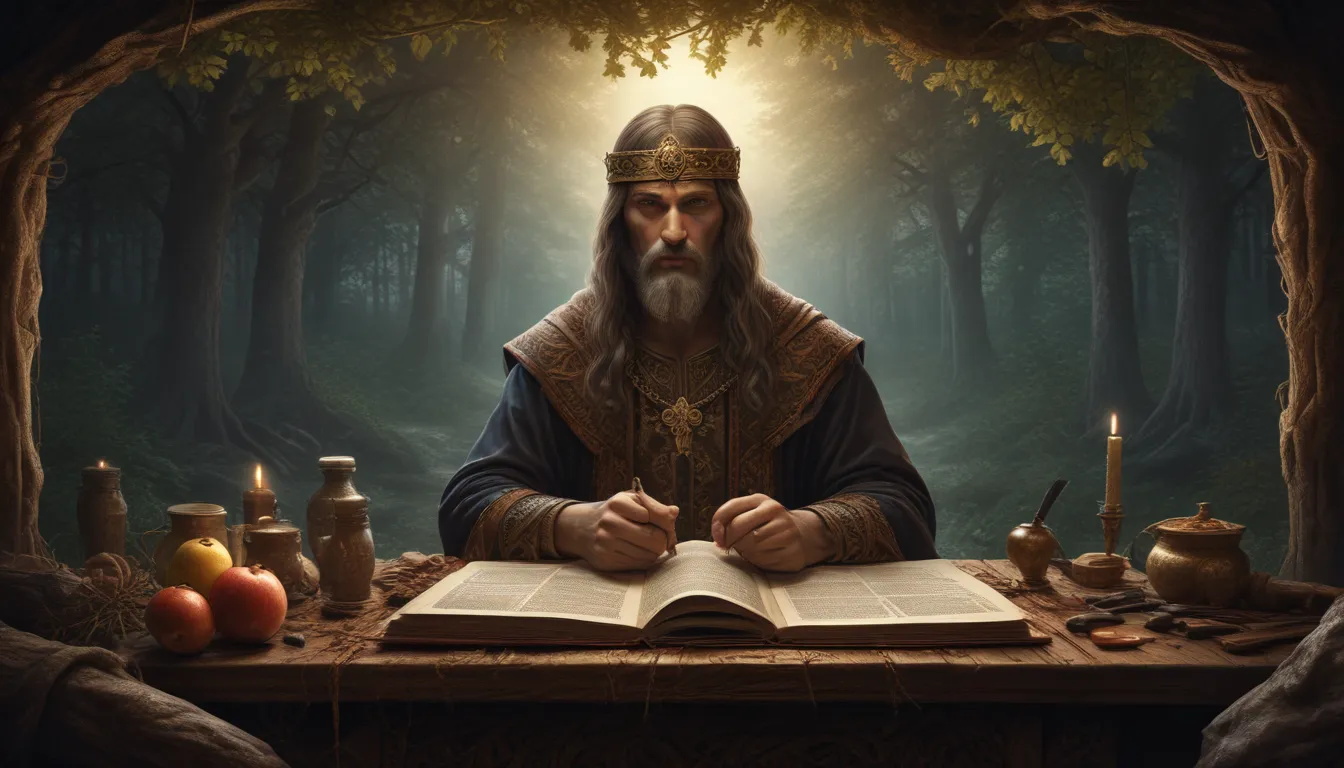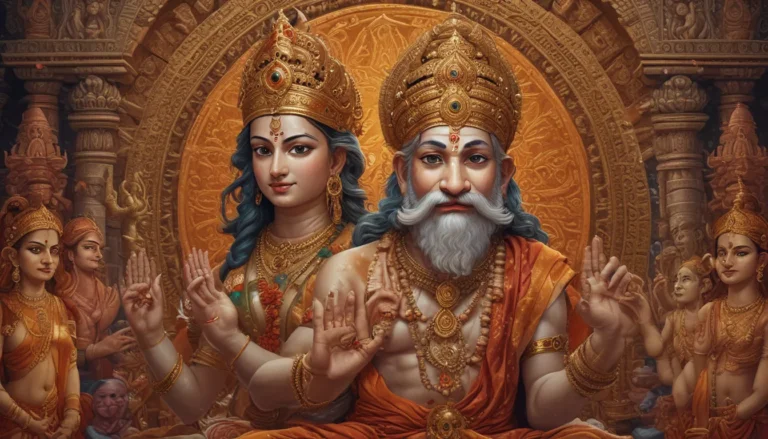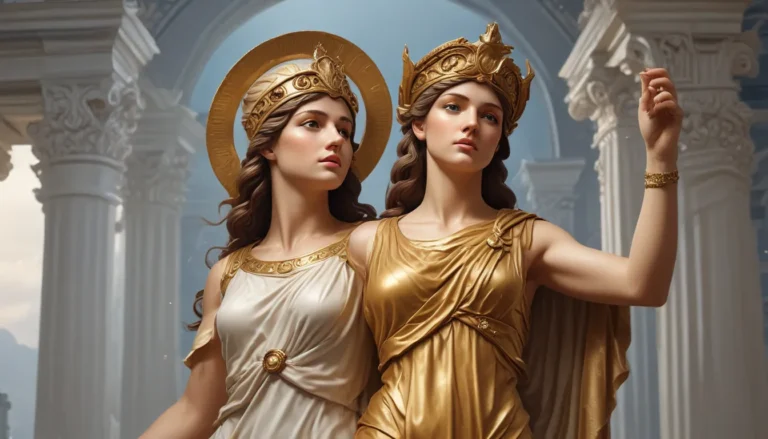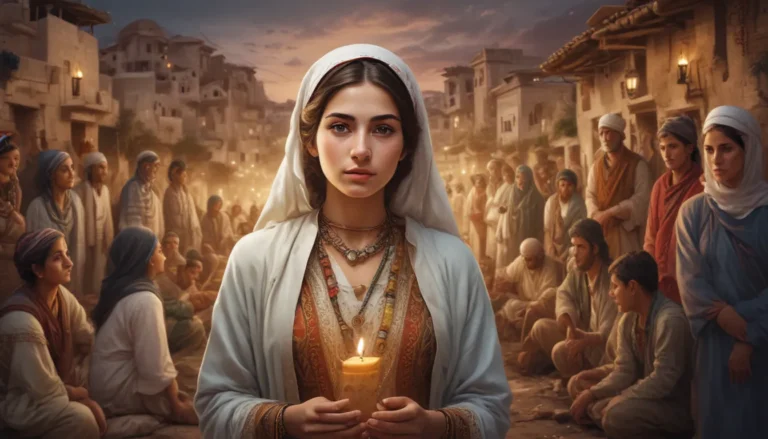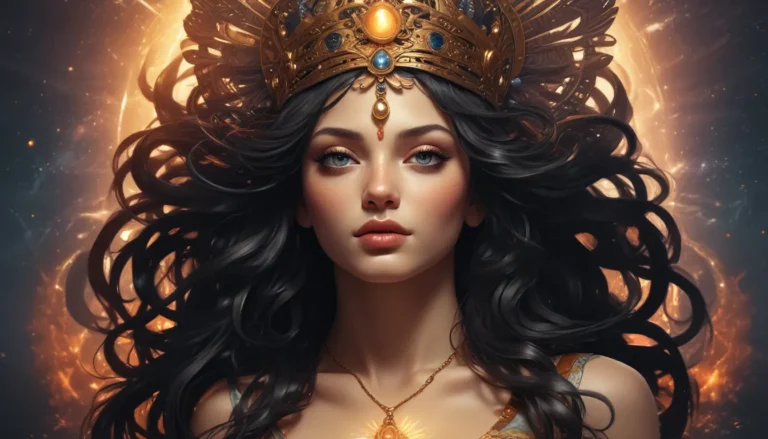The images in our articles may not match the content exactly. They are used to grab your attention, not to show the exact details in the text. The images complement the text but do not replace it.
Are you intrigued by the ancient belief systems of the Germanic peoples? Do you find solace in connecting with nature and honoring ancestral traditions? If so, you may be drawn to Heathenry, also known as Germanic Neopaganism or Ásatrú. This vibrant and diverse faith offers a modern revival of the pre-Christian practices of the Norse, Anglo-Saxon, and Continental Germanic tribes, weaving together myths, folklore, and traditions in a spiritual tapestry that resonates with many today.
In this comprehensive guide, we will explore 16 fascinating facts about Heathenry, shedding light on its historical roots, modern revival, and the values it upholds. From the key deities that shape its pantheon to the ethical virtues it espouses, Heathenry offers a unique perspective on spirituality, nature, and community. So, buckle up and prepare to embark on a journey of discovery as we unravel the essence of Heathenry and delve into the depths of this ancient belief system.
The Origins of Heathenry: A Glimpse Into the Past
Heathenry traces its roots back to the pre-Christian belief systems of the Germanic peoples, encompassing the Norse, Anglo-Saxon, and Continental Germanic traditions. This spiritual path honors deities such as Odin, Thor, Freyja, and Frigg, drawing inspiration from a rich tapestry of myths, sagas, and folklore that have endured through the ages.
The term “Heathenry” itself is derived from the Old English word “hæðen,” meaning “of the heath” or “dwelling on the heath.” This symbolic connection to the natural world underscores the reverence for nature and the earth as sacred elements within the belief system, highlighting the importance of harmony with the environment.
Heathens typically celebrate Blóts and Sumbels as part of their religious practices. Blóts are ceremonial offerings and feasts held during significant times in the Heathen calendar, marking the changing of seasons and honoring the deities. Sumbels involve communal toasting and sharing of mead, fostering bonds of fellowship and honor among participants.
The Resurgence of Heathenry in the Modern Era
The modern revival of Heathenry gained momentum in the 20th century, particularly in Europe and North America, fueled by a growing fascination with Norse mythology and a desire to reconnect with ancestral heritage. This resurgence has led to the establishment of numerous Heathen communities and organizations worldwide, creating spaces for like-minded individuals to come together and practice their faith.
Within the broader Heathen movement, Ásatrú and Odinism are two prominent branches that focus on different aspects of Norse spirituality. Ásatrú, meaning “faith in the Æsir,” centers on the worship of the Norse pantheon as a whole, while Odinism places particular emphasis on the veneration of Odin, the Allfather, as the central deity within its spiritual framework.
Exploring Symbols, Ethics, and Rituals in Heathenry
Runes, the ancient Germanic alphabet, hold significant symbolic and divinatory value in Heathenry, with practitioners using runic inscriptions, talismans, and divination practices involving runestones to seek guidance, protection, and insight from their ancestral heritage.
The Nine Noble Virtues serve as ethical and moral guidelines for many Heathens, encompassing principles such as courage, honor, fidelity, and perseverance. These virtues provide a moral compass for individuals practicing Heathenry and guide their actions in alignment with the values of the faith.
Blótspenningr, or the sacrificial coin, is a customary offering in Heathen rituals, symbolizing reciprocity and the exchange of gifts with the divine powers. Heathens present blótspenningr during Blóts and other religious rites as a token of respect and reverence for the gods.
Embracing Ancestral Wisdom and Spiritual Practices
Ancestor veneration holds significant importance within Heathenry, as practitioners honor their forebears through rituals, offerings, and the preservation of familial traditions. This practice fosters a deep sense of connection to one’s lineage and heritage, weaving a web of kinship that transcends generations.
The concept of Wyrd, or fate, is integral to the Heathen worldview, encompassing the idea of destiny and the interconnectedness of past, present, and future. This belief in personal agency and the unfolding of one’s individual path within the web of fate shapes the way Heathens perceive their place in the world and the choices they make.
The Heathen calendar comprises seasonal festivals known as “blótmoths,” corresponding to key points in the agricultural and astronomical cycles. These occasions mark opportunities for feasting, storytelling, and spiritual observance within the Heathen community, celebrating the rhythms of nature and the passage of time.
Diving Into Mythology, Magic, and Community in Heathenry
The Hávamál, a collection of Old Norse poems, offers wisdom teachings and ethical insights highly regarded by Heathens. This revered source of inspiration contains practical advice, ethical guidelines, and poetic reflections on life, guiding individuals along their spiritual path and offering insights into the complexities of human experience.
Many Heathens engage in crafting and wearing intricate jewelry adorned with symbols of significance, such as Mjölnir or the Valknut, as expressions of faith and connections to the divine. These amulets, pendants, and rings serve as tangible reminders of their beliefs and the values they hold dear.
Some Heathens practice Seiðr, a form of Norse magic and shamanic journeying that involves trance work, divination, and spirit communication. This spiritual practice offers a means of connecting with the unseen realms and seeking guidance from the forces that shape the fabric of existence, deepening the practitioner’s spiritual connection and insight.
Upholding Values of Hospitality, Reciprocity, and Inclusivity
The Heathen community places a strong emphasis on hospitality, reciprocity, and frith, or peace and harmony, fostering inclusive and supportive environments for individuals to come together in shared celebration and mutual respect. These principles underpin the sense of kinship and community that defines Heathenry as a spiritual path.
Heathenry continues to evolve and adapt in the modern era, embracing diversity and inclusivity while honoring its ancient roots. Practitioners strive to uphold the traditions and values of their ancestors while embracing the dynamic tapestry of human experience and the interconnectedness of all beings within the web of Wyrd, forging pathways toward a vibrant and inclusive future for the faith.
In conclusion, Heathenry offers a vibrant tapestry of ancient wisdom, spiritual reverence, and communal fellowship, weaving together the threads of Norse mythology, ancestral heritage, and the rhythms of nature. With its rich cultural heritage and enduring legacy, Heathenry invites individuals to embark on a profound journey of connection, wisdom, and spiritual exploration, embracing the echoes of the past while shaping a vibrant and inclusive future for the faith.
FAQs About Heathenry
What are the key deities in Heathenry?
In Heathenry, the Norse gods and goddesses play a central role, with revered deities such as Odin, Thor, Freyja, and Frigg representing different aspects of life, nature, and the human experience.
How do Heathens typically celebrate their faith?
Heathens celebrate their faith through rituals, gatherings, and observances that honor the changing seasons, ancestral traditions, and the cycles of nature. These celebrations often involve feasting, storytelling, and communal activities that foster a strong sense of kinship and connection.
As you delve deeper into the mysteries of Heathenry, may you find inspiration, wisdom, and a profound sense of connection to the ancient traditions and beliefs that have shaped this vibrant spiritual path. Uncover the echoes of the past while forging pathways toward a future built on inclusivity, respect, and a deep reverence for nature and community.
